The 10 Best Rivers to Run in the Fall
Let’s get to the good stuff right away! �����ԹϺ��� presents our top 10 whitewater rivers for autumn paddling.
Deerfield River, Massachusetts
Kaituna, North Island, New Zealand
I once spent two months camped in a parking lot in West Virginia so that I could have easy access to the scariest river in the Southeast. Four days a week the Army Corps of Engineers would open the flood gates of the Summersville Dam, causing the Gauley River, which only runs in the fall, to fill in. About 2,800 cubic feet of water per second would rush down over holes and around undercut rocks, creating class V rapids that made the dirtbag accommodations completely worth it.
Spring gets a lot of attention from boaters, but fall is an equally good time to run rivers if you know where to paddle: the water is warm, the summer crowds go home, and some otherwise unrunnable rivers come into season. These are the 10 best rivers to run after summer winds down.
The Best Fall Whitewater: Gauley River, West Virginia
Best for rednecks and carnage
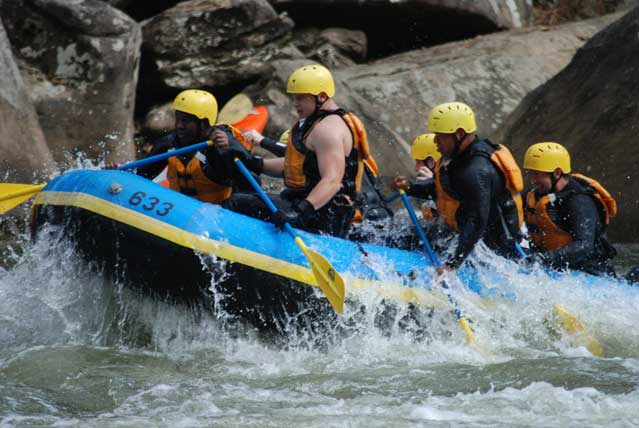
Anyone who’s spent a lot of time on rivers will have a Gauley story. The Gauley, which runs for six weekends in the fall, is the biggest, gnarliest, and arguably most fun river on the East Coast. Guides, kayakers and river bums from across the country make the pilgrimage to West Virginia each fall to run the Class V rapids of the Upper and Lower Gauley. You’re going to have an audience, and there’s a good chance you’re going to flip, especially at Sweet’s Falls. On days when the Gauley doesn’t run, the neighboring New River, the oldest in the country, is a serious stretch of whitewater as well.
For non-rafting days, the New River Gorge has world-class sport climbing. Fayetteville, the region’s main social hub, is home to a surprisingly large number of good restaurants, including , whose sweet potato pancakes are almost as well known as the river. For a real West by-God Virginia experience, hit the drive through at . Don’t miss , the biggest river-oriented party in the country: river people who have been living in their vans for six months aren’t afraid of a good time.
The Best Fall Whitewater: Dead River, Maine
Best for non-stop whitewater
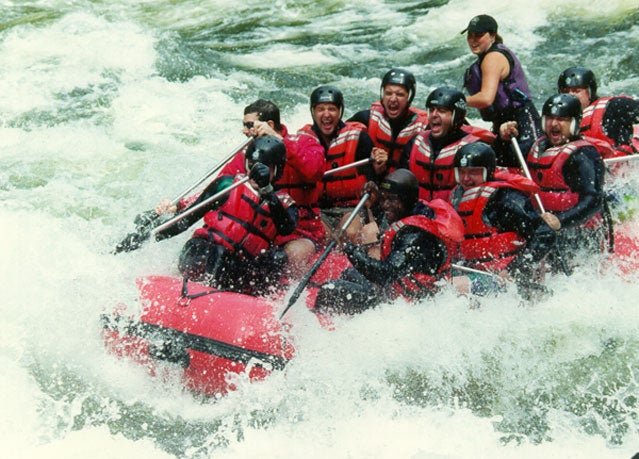
The 15-mile whitewater run from Spencer Stream to the Forks, where the Dead River runs into the Kennebec, is the most continuous stretch of whitewater in New England. The rapids start right below the put-in with the Class III Spencer Rips, and run through rapids like the aptly named Mile Long, a Class IV. There are lots of surf spots, like Elephant Rock, and the miles of busy water gives boaters plenty of places to play. The Dead only runs on certain weekends—there are only eight commercial-level releases scheduled for this year—which means that excitement levels are usually high, but boater’s experience levels can be low. Unemployment Hole, in the last rapid, Big Poplar, is known for swallowing boats. The Forks is full of paddlers in the summer, but it usually quiets down by September. Your best bet for socializing, and beer, is to stop by ‘s brewery for a raft-guide-brewed Kennebec River IPA.
The Best Fall Whitewater: Green River, Utah
Best for mellow multi-day trips
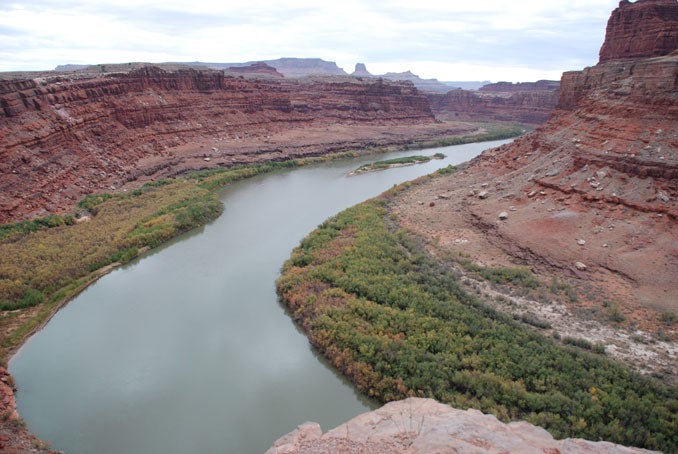
The desert rivers of the Southwest are at their nicest in the fall. Unlike the spring, flows are mellow, and between the summer and winter the brutal Utah temperature gradient evens out. The days stop being scorchingly hot, and the nights aren’t freezing. Desolation and Grey canyons, which sit back-to-back on the Green River and contain 86 miles of Class II-III whitewater, are perfect for beginner kayakers or rafters who want a little more than a float trip. The administers permits through a lottery and keeps group sizes small, so the river is nearly unpopulated. and his crew named the first canyon Desolation because they ran it after nearly dying in Lodore Canyon, directly upstream. Aside from the whitewater, Deso and Grey have endless opportunities for side hikes and canyon exploration, as well as a lot of good, unvandalized petroglyphs.
The Best Fall Whitewater: Gore Canyon, Colorado
Best for getting scared out of your wits
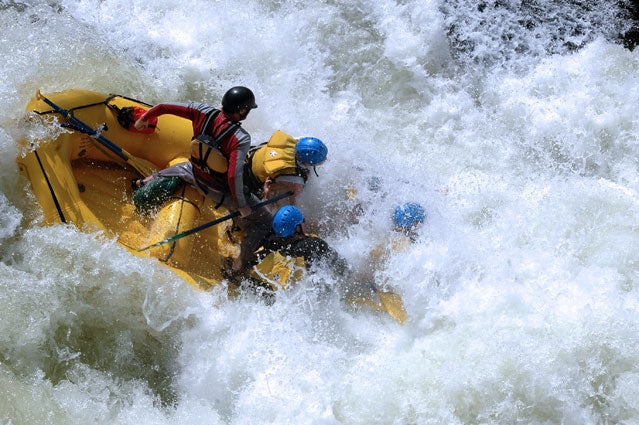
Gore Canyon is one of the most technical commercially run stretches of river in the country, and it has teeth. You don’t want to swim here: the riverbanks, made of rock chunks blasted out of the Rockies to make way for train tracks, are jagged and sharp. The fact that the canyon is only accessible by boat or train—or by foot, if things get really desperate—further ups the consequence factor. Gore Rapid and Tunnel Falls are both solid, technical Class V rapids, and the rest of the nine miles of whitewater is made up of big Class IV holes, waves and drops. Many of the rapids have sneak lines, or ways to avoid the biggest hazards, but even those require precision and must-make moves. It’s not uncommon for boaters to walk around Tunnel.
The Best Fall Whitewater: Upper Youghiogheny, Maryland
Best for creek boaters
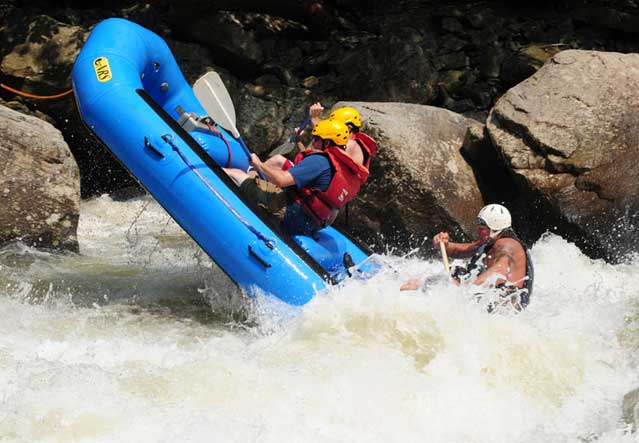
The Yough is less of a river than it is a creek. The 10-mile stretch of whitewater is narrow and rocky, and drops anywhere between 50 and 140 feet per minute. Youghiogheny is an Algonquin word that means stream flowing in the wrong direction, and running it takes a lot of fast thinking and reading water on the fly. The major rapids, like Class IV+ Meat Cleaver and National Falls, all have must-make moves, and the whitewater rarely lets up. You’ll likely spend a lot of time in eddys catching your breath. Commercial outfitters run small rafts with just four people in them, because it’s impossible to navigate a bigger boat through the drops and chutes. The Upper Yough releases Friday, Monday, and the first Saturday of the month, through October; if you’re looking for an extra thrill, opens up Ohiopyle Falls, just above the lower stretch, for a few weeks every year in late August and early September. For boaters who aren’t up to the Class V section, the Lower Youghiogheny is the most popular Class III run east of the Mississippi.
The Best Fall Whitewater: Deerfield River, Massachusetts
Best for families and leaf freaks
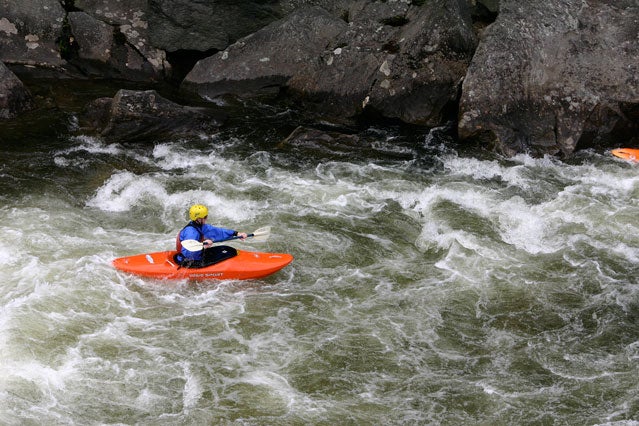
One of the most heavily-used rivers in the country, the Deerfield holds 10 dams over its 76 miles. The longest undammed stretch of the Deerfield is the Zoar Gap section, 17 miles of Class III and III+ which stretches from Fife Brook Dam to Number Four Dam. It’s popular with kayakers because of the multitude of features, and because busy rapids, like Class II Pinball, give beginner boaters lots of places to work on reading water and navigating eddys. The other whitewater section, the Class IV Dryway, is short but serious. It’s less than three miles, but it gets progressively more intense as you head downstream. There are three major sieves on the section, so first-time boaters should go with someone familiar with the rapids.
The Best Fall Whitewater: Rogue River, Oregon
Best for beautiful scenery
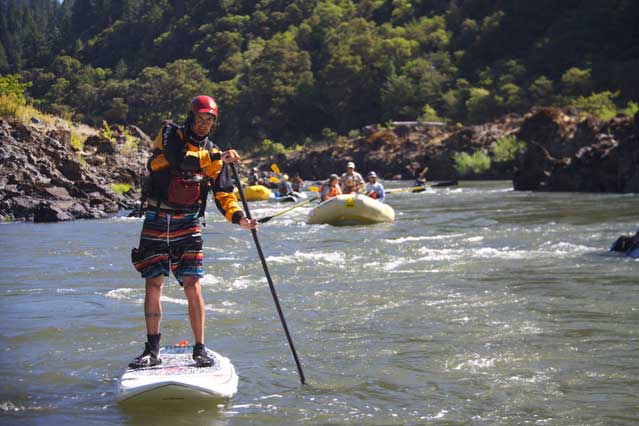
The Rogue was one of the eight rivers initially protected by the passage of the in 1968, so it’s been relatively untouched by the damming, commercial use, and agriculture that have altered other waterways. In it’s entirety, the river runs 215 miles from Crater Lake National Park to the Pacific. Most people choose to take three to five days to paddle the 34-mile Wild section, from Grave Creek to Watson Creek. The federal designation means that use is heavily regulated, and the keeps the number of boaters to 120 a day. Fishermen can find Chinook Salmon, Coho Salmon, Steelhead, and Cutthroat Trout, among others.
The Best Fall Whitewater: Ocoee River, Tennessee
Best for slalom kayakers
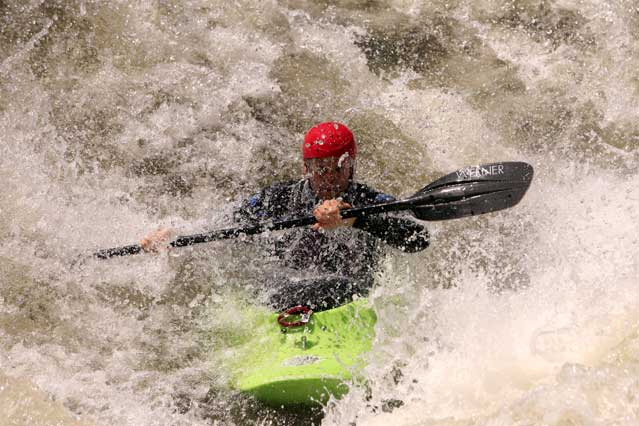
The Ocoee was the first natural river used in an Olympic slalom event, and course designers dredged the river and made the channel narrower to engineer the perfect flow for the competition. The 1996 Olympic course, which is on the upper section, is still in place and runnable, but you can also run the middle stretch, or combine the two for 11 miles of Class III-IV rapids. The Ocoee is also famous as the birthplace of freestyle kayaking; one of the first-ever whitewater rodeos took place on the Middle Ocoee in 1983. The river is dam released Thursday through Monday.
The Best Fall Whitewater: American River, California
Best for all-aounders
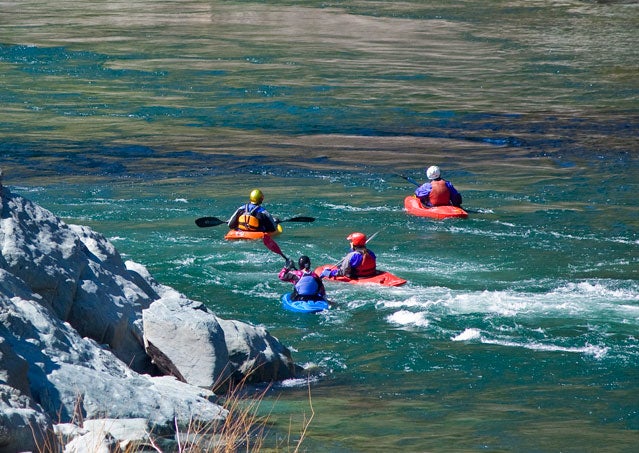
The American is one of the most diverse rivers in the country. The three forks of this California waterway offer up options for every kind of river running, from quiet Class I floats on the South Fork to creeky Class V sections on the North Fork. In the fall, the Middle Fork is the most consistent stretch of whitewater, because Oxbow Dam, just above the put-in, releases on a regular basis. It’s also one of the only places in the world where you can run a rapid in a tunnel. The intimidating-looking Tunnel Chute, which was blasted out by gold miners, is one of the first rapids you hit on the 16-mile whitewater section of the Middle Fork. Another unique river feature is Ruck-a-Chucky falls, a 30-foot drop that involves a mandatory portage.
The Best Fall Whitewater: Kaituna, North Island, New Zealand
Best for big drops
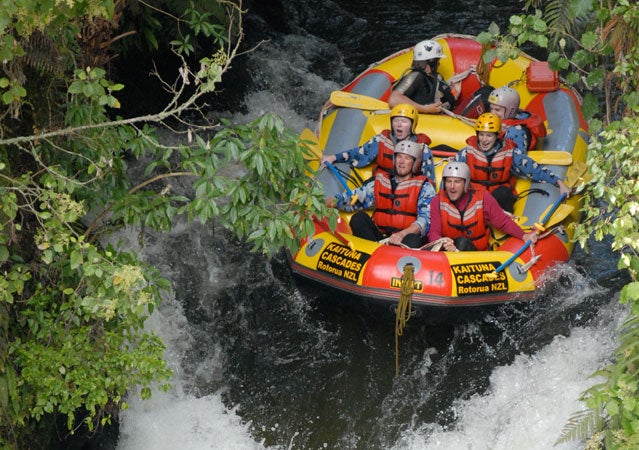
If you’re looking for high water, go south. Fall is spring in the southern hemisphere, which means that New Zealand’s Kaituna, a pool-drop river that mixes steep sections with flat water, is pumping. There are 14 drops on the rafting section, including 23-foot-high , the largest commercially-run waterfall in the world. The season starts in October and runs through May, so fall is just the beginning. The water stays warm all year round, and the river itself is beautiful and clear green, and runs through a rainforest. The put-in for the Kaituna is just outside of Rotarua, which is also one of the best places on the North Island to mountain bike and hike.


